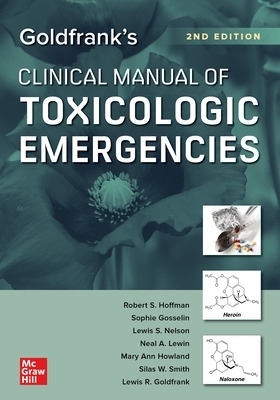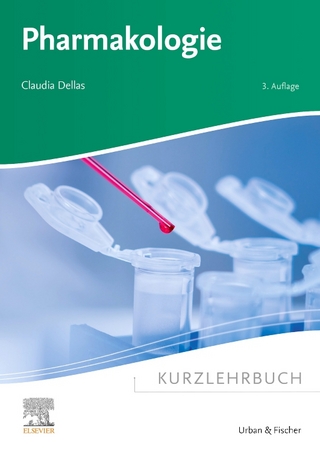
Goldfrank's Clinical Manual of Toxicologic Emergencies, Second Edition
McGraw-Hill Education (Verlag)
9781260474992 (ISBN)
A Doody's Core Title for 2024!
After more than a decade on the market, Goldfrank’s Toxicologic Emergencies has established itself as the go-to reference for medical toxicology—and this companion manual distills the most important information into a portable, easy-to-navigate resource.
Goldfrank’s Manual of Toxicologic Emergencies distills critical information into short summaries and synopses, so you can use it to treat patients in clinical settings or for quick review of critical topics. Fully updated to ensure all information is completely current, this new edition is filled with tables, figures, images, and other visuals to make finding the right answers quick and easy. Each chapter is a direct distillation of the corresponding chapter in Goldfrank’s Toxicologic Emergencies.
Whether you’re a medical toxicologist, pharmacist, physician, nurse practitioner, or student, Goldfrank’s Manual of Toxicologic Emergencies provides all the right answers where and when you need them.
Covers the full range of xenobiotics:
Includes pharmaceuticals, recreational drugs, and substances of abuse; food and plant toxins; envenomations; household toxins; pesticides and herbicides; rodenticides; metals; poison gases; and environmental toxins
Systematically reviews toxicokinetics, pathophysiology, clinical manifestations, diagnostic testing, and management for each xenobiotic
Provides "Antidotes in Brief"—at-a-glance guides to specific antidotes and their primary applications
Authoritative answers at your fingertips:
How to manage the poisoned or overdosed patient
What techniques effectively eliminate toxins
Which imaging modalities yield the best results
McGraw-Hill authors represent the leading experts in their fields and are dedicated to improving the lives, careers, and interests of readers worldwide Lewis S. Nelson, MD, FACEP, FACMT Director, Medical Toxicology Fellowship Program; Associate Director, New York City Poison Center; Attending Physician, Department of Emergency Medicine, Bellevue Hospital Center and New York University Medical Center; Assistant Professor of Emergency Medicine, New York University School of Medicine, New York, New York. McGraw-Hill authors represent the leading experts in their fields and are dedicated to improving the lives, careers, and interests of readers worldwide
The table of contents (below) will mirror the main text, both for completeness and ease of cross-referencing.
Historical Principles and Perspectives
Toxicologic Misfortunes and Catastrophes in History
PART A
THE GENERAL APPROACH TO THE PATIENT
Initial Evaluation of the Patient: Vital Signs and Toxic Syndromes
Principles of Managing the Acutely Poisoned or Overdosed Patient
SC1. Principles of Antidote Stocking
Decontamination Principles: Prevention of Gastrointestinal Absorption
SC2. Decontamination Principles: Prevention of Dermal, ophthalmic and inhalational Absorption
A1. Activated Charcoal
A2. Whole-Bowel Irrigation and Other Intestinal Evacuants
Principles and Techniques Applied to Enhance Elimination
| Erscheinungsdatum | 20.12.2023 |
|---|---|
| Zusatzinfo | 50 Illustrations |
| Verlagsort | OH |
| Sprache | englisch |
| Gewicht | 1179 g |
| Themenwelt | Medizin / Pharmazie ► Allgemeines / Lexika |
| Medizin / Pharmazie ► Gesundheitsfachberufe ► Rettungsassistent / -sanitäter | |
| Medizin / Pharmazie ► Pflege | |
| Studium ► 2. Studienabschnitt (Klinik) ► Pharmakologie / Toxikologie | |
| ISBN-13 | 9781260474992 / 9781260474992 |
| Zustand | Neuware |
| Informationen gemäß Produktsicherheitsverordnung (GPSR) | |
| Haben Sie eine Frage zum Produkt? |
aus dem Bereich


